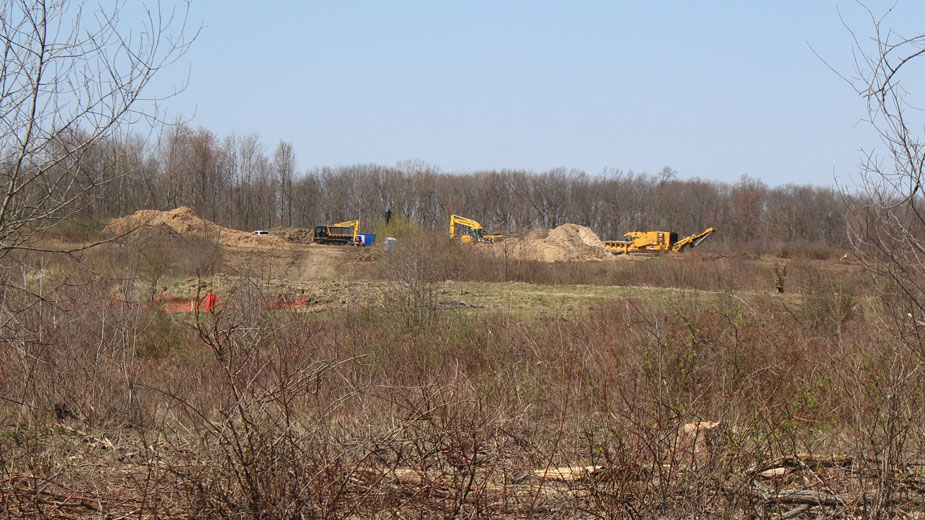GM Gets Army Corps Permit; Clearing Site for Battery Plant
LORDSTOWN, Ohio – Work was underway Wednesday at the site of the battery cell plant being developed by General Motors LLC and LG Chem in the village.
The start of site clearing and grading follows the issuance by the U.S. Army Corps of Engineers of a discharge permit under Section 404 of the Clean Water Act.
Section 404 establishes a program to regulate the discharge of dredged or fill materials into U.S. waters, including wetlands, according to an Army Corps of Engineers news release. The permit was issued Tuesday to GM on behalf of GigaPower LLC for construction of the $2.3 billion battery plant, which would mass-produce battery cells for next-generation electric vehicles.
GM spokesman Dan Flores this morning confirmed the permit had been approved.
“With the permits that have been issued so far, we can begin site clearing and moving dirt across the site. So the site work that we will begin is very monumental and important, but we are still working to secure other required permits,” Flores said.
“The permit authorizes the placement of fill material into approximately 66 acres of wetland and 81 linear feet of stream for construction of the plant and attendant features,” Scott Hans, regulatory division chief of the Corps’ Pittsburgh District, said in the Army Corps release. “Wetland fills will be mitigated by reestablishing 130.2 acres of wetland and rehabilitating 4.1 acres of wetland at the Mosquito Creek Wildlife Area.”
Meanwhile, this morning the Western Reserve Port Authority approved executing a term sheet and indemnity agreement in connection with the project and authorized issuance of a sales tax exemption certificate.
“It’s very exciting for everyone in this Valley,” said John Moliterno, WRPA executive director. “We’re very excited about the jobs that the construction will bring. We’re even more excited about the jobs that the plant itself will create once it’s up and running from everything we’ve been told.”
GM, which announced plans for the plant in December, said the plant will employ about 1,100 workers.
“This effort is part of our pursuit of incentives to enhance the competitiveness of Lordstown battery cell plant project. We appreciate the state’s willingness to explore creative solutions on this important project,” GM’s Flores said.
Anthony Trevena, the port authority’s economic development director, credited U.S. Rep. Tim Ryan, D-13 Ohio, with bringing the port authority’s tools to GM’s attention during an in-person meeting with GM CEO Mary Barra.
“He specifically talked about this as one of the incentives that the community could offer,” Trevena said.
“Like everyone in the Valley, I was devastated by General Motors’ decision to close the Lordstown plant, but I knew the importance of staying in close contact with CEO Mary Barra and her executive team,” Ryan said.
When GM and LG Chem decided to develop the battery plant in Lordstown – a decision the congressman said he lobbied for – connecting GM’s real estate division with WRPA’s Moliterno and Trevena to discuss elements of a capital lease and other programs made “perfect sense,” he added.
GM spent $5.1 million for the land last month. The building itself is expected to cost $608 million, plus another $1.64 billion for machinery and equipment, Trevena reported.
Over the past week, the Ohio Environmental Protection Agency has issued storm water and water quality certifications for the project, and is pursing other necessary approvals for the project. GM still needs site plan approval for the building, a second-phase storm water permit and an air quality permit “before we pour the slab and begin construction,” Flores said.
Copyright 2024 The Business Journal, Youngstown, Ohio.



